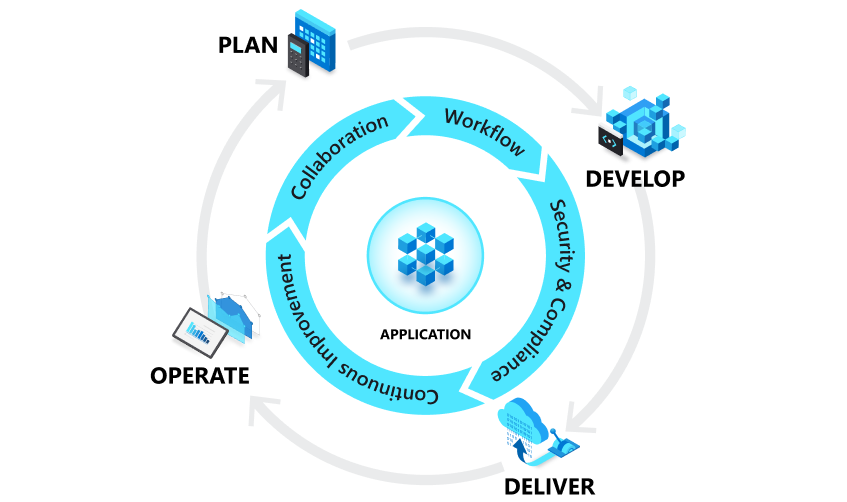Develop modern software with DevOps
The development phase of DevOps is where all the core software development work happens. As input, it takes in plans for the current iteration, usually in the form of task assignments. Then it produces software artifacts that express the updated functionality. Development requires not only the tools that are used to write code, such as Visual Studio, but also supporting services like version control, issue management, and automated testing.

Select a development environment
Developers ideally spend most of their time in core development tasks, such as editing and debugging code. Having the right toolchain in place can make the difference between peak productivity and suboptimal performance. Integrated development environments (IDEs) have evolved beyond their humble beginnings as places to edit and compile code. Today, developers have the ability to perform nearly all their DevOps tasks from within a single user experience when they select the right development environment.
Manage code through version control and Git
As teams scale, the number of stakeholders who depend on and contribute to codebases can grow quickly. Without a strategy in place to manage changes to source code, development teams put themselves at significant risk of ongoing confusion, errors, and lost productivity. Implementing even the most basic version control can safeguard against those pitfalls. Most teams opt to use Git, the most popular version control system, to manage their code.
Automate processes
The real value of the development stage comes from the implementation of features. Unfortunately, there are many other tasks that sap time from the development team. Compiling code, running tests, and preparing output for deployment are a few examples. To minimize the impact, DevOps emphasizes automating these types of tasks through the practice of continuous integration.
Another time-consuming task in the development lifecycle is fixing bugs. While bugs are often seen as an inevitable part of software development, there are valuable steps any team can take to reduce them. Learn how to shift left to make testing faster and more reliable.
Next steps
Microsoft has been one of the world's largest software development companies for decades. Learn about how Microsoft develops in DevOps.
For a hands-on DevOps experience with continuous integration, see the following learning paths: